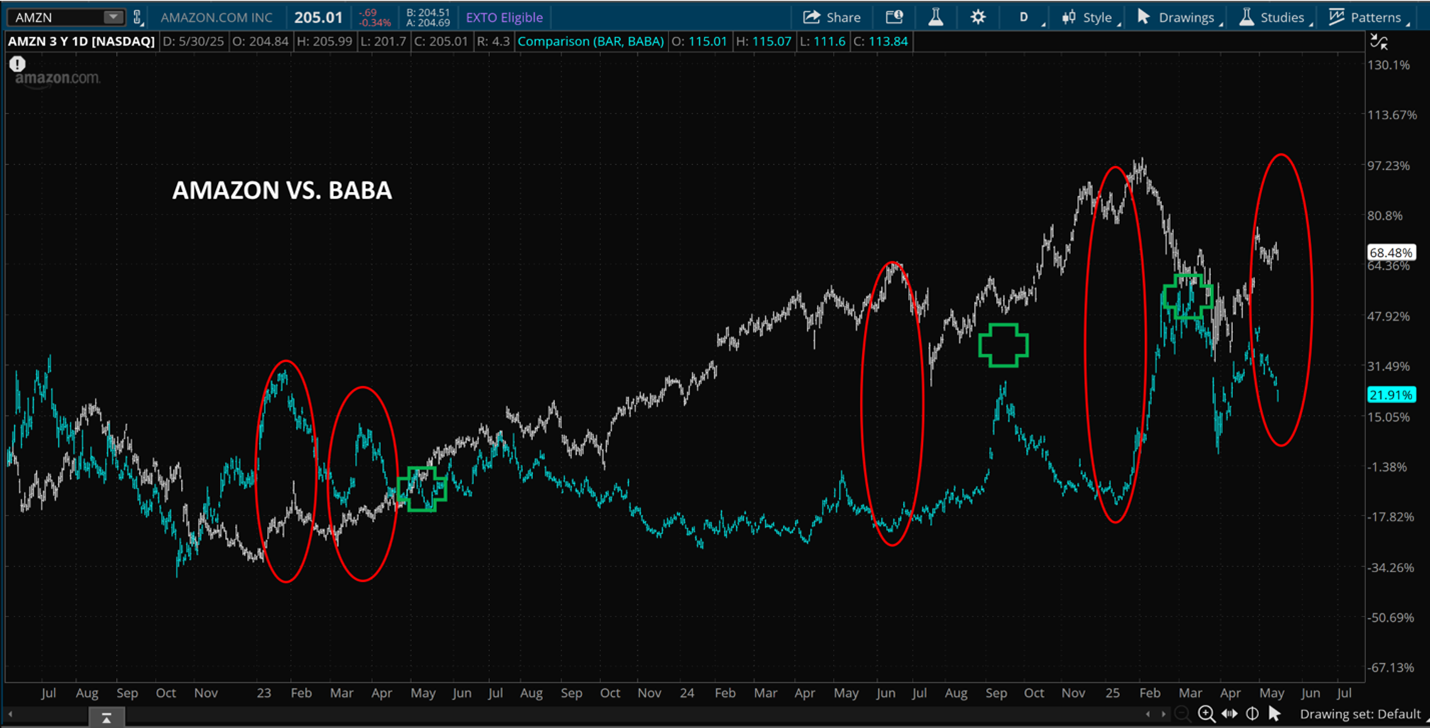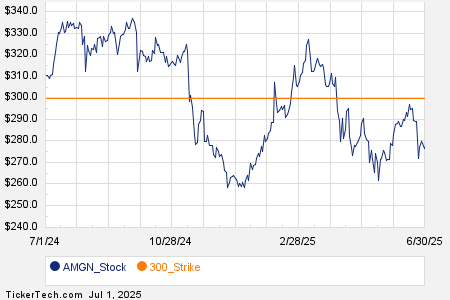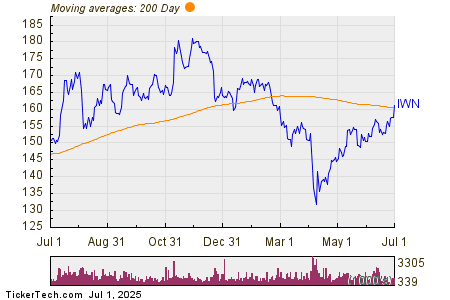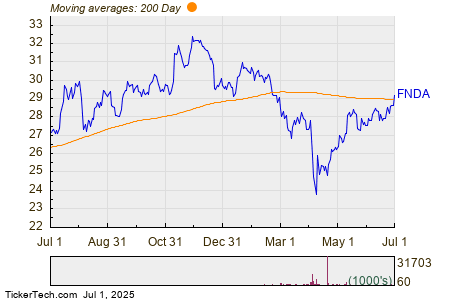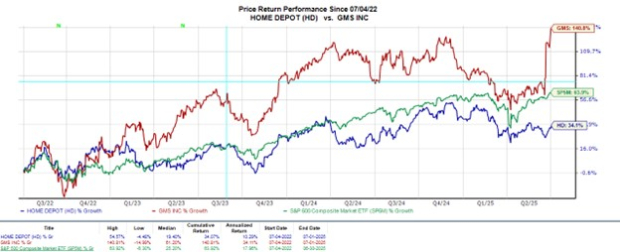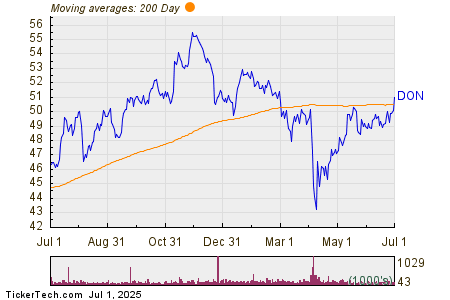Super Micro Computer Faces Challenges Amid AI Market Build-Out
Super Micro Computer (NASDAQ: SMCI) shares have experienced significant volatility lately. The stock rose sharply before a preliminary earnings report but fell nearly 10% just before the announcement. Following the report, shares fluctuated significantly. Currently, the stock has increased nearly 40% year to date but is down about 50% compared to last year, indicating its erratic movement.
This analysis will explore the latest preliminary results from the company and its guidance to aid investors in making informed decisions.
Where to invest $1,000 right now? Our analyst team has identified the 10 best stocks to buy right now. Learn More »
Revised Fiscal 2025 Outlook, New Growth Prospects for Fiscal 2026
2024 was a challenging year for Supermicro, marked by a short report alleging accounting irregularities, delays in financial reporting, a Department of Justice (DOJ) investigation reported by the Wall Street Journal, and the abrupt resignation of its auditor.
During its earnings call, the company expressed confidence in filing its 2024 annual 10-K report and the first- and second-quarter 10-Q reports by the Feb. 25 deadline. A special committee found no supporting evidence for the claims leading to its former auditor, Ernst & Young’s resignation. Nonetheless, both the DOJ and SEC are investigating the company, having issued subpoenas for certain documents in late 2024.
For fiscal Q2, Supermicro anticipates revenue between $5.6 billion and $5.7 billion, indicating a year-over-year increase of 54% at the midpoint. This figure falls short of the $5.95 billion consensus revenue estimate reported by Bloomberg. Expected adjusted earnings per share will be in the range of $0.58 to $0.60, representing only 5% year-over-year growth due to pressure on margins.
Before the short report and filing delay, the company was already experiencing decreased gross margins, which fell to 11.2% in fiscal Q4 from 17% a year prior and 15.5% in Q3 2024. Gross margins are crucial as they determine how much revenue becomes profit; a higher percentage is favorable. Supermicro operates in a low-margin sector, while leading semiconductor firms like Nvidia and Broadcom report gross margins around 75%.
For fiscal Q2 2025, Supermicro estimates gross margins between 11.8% and 11.9%, with fiscal Q3 projected at about 12%.
In response to a question from Bank of America analyst Ruplu Bhattacharya regarding industry margins facing pressure from increasing competition among AI server manufacturers, Supermicro maintained that its margin targets remain unchanged, emphasizing the value of being first to market with superior solutions.
Looking forward, Supermicro forecasts fiscal Q3 revenue between $5 billion and $6 billion, below analyst expectations of $6.09 billion, according to LSEG. Adjusted EPS is estimated between $0.46 and $0.62.
The company has also revised its fiscal 2025 revenue guidance down to between $23.5 billion and $25 billion, reduced from a prior estimate of $26 billion to $30 billion. This adjustment reflects delays in new technology and the repercussions of the delayed 10-K filing. However, the company aims for $40 billion in revenue for fiscal year 2026, signifying 60% growth.
Describing the 2026 forecast as “very conservative,” the company anticipates growth from the shift to Nvidia’s Blackwell GPU platforms and the expansion of liquid-cooled data center solutions.
Additionally, Supermicro announced a $700 million private placement of new convertible senior notes due in 2028 to bolster its business growth. These new notes will carry an interest rate of 2.25% and convert into common stock at an approximate 50% premium over the volume-weighted average price of its common stock as of Feb. 12. The company also amended its existing 0% coupon senior convertible notes, which will now generate 3.5% interest and convert at a 105% premium.

Image source: Getty Images.
Investment Considerations for Super Micro Computer
Joe Pesci famously described the complex nature of Supermicro as “a mystery wrapped in a riddle inside an enigma.” The company stands to gain from the ongoing AI infrastructure expansion, which is set to accelerate this year. Its ambitious $40 billion revenue target for fiscal 2026 seems plausible. However, recent reductions in guidance for fiscal 2025 coupled with underestimated gross margins signal competitive challenges.
Concerns linger regarding the company’s accounting practices and the abrupt resignation of its auditor, along with ongoing investigations by the DOJ and SEC. A crucial deadline approaches for the company to file its financials to avoid possible delisting. Additionally, questions arise about the necessity of raising new convertible debt.
The stock currently trades at an appealing forward price-to-earnings ratio (P/E) of less than 15 times the fiscal 2025 analyst estimates and around 11 times the fiscal 2026 estimates.

SMCI PE Ratio (Forward 1y) data by YCharts
Despite its low-margin, competitive nature, and typically conservative valuation multiples, the stock could be appealing if AI infrastructure spending continues its upward trend. Given ongoing issues such as weak margins and accounting inquiries, investors may prefer more secure options in this sector like Nvidia or Broadcom.
For now, maintaining a cautious stance would be prudent. However, aggressive investors may find that the company’s impending financial filings by Feb. 25 could act as a catalyst for the stock. Still, this approach may lean more towards speculation than genuine investment.
Should You Invest $1,000 in Super Micro Computer Right Now?
Before purchasing stock in Super Micro Computer, consider this:
The Motley Fool Stock Advisor analyst team recently highlighted the 10 best stocks for investors to consider, excluding Super Micro Computer. The stocks selected could offer substantial returns over time.
Reflect on Nvidia’s inclusion on this list back on April 15, 2005… had you invested $1,000 then, you would now have $850,946!
Stock Advisor provides a simple pathway for investor success, with portfolio-building guidance, regular analyst updates, and two new stock recommendations each month. The Stock Advisor service has more than quadrupled the return of the S&P 500 since its launch in 2002.
Learn more »
*Stock Advisor returns as of February 7, 2025
Bank of America is an advertising partner of Motley Fool Money. Geoffrey Seiler has no position in any of the stocks mentioned. The Motley Fool has positions in and recommends Bank of America and Nvidia. The Motley Fool recommends Broadcom. The Motley Fool has a disclosure policy.
The views and opinions expressed herein are the views and opinions of the author and do not necessarily reflect those of Nasdaq, Inc.




